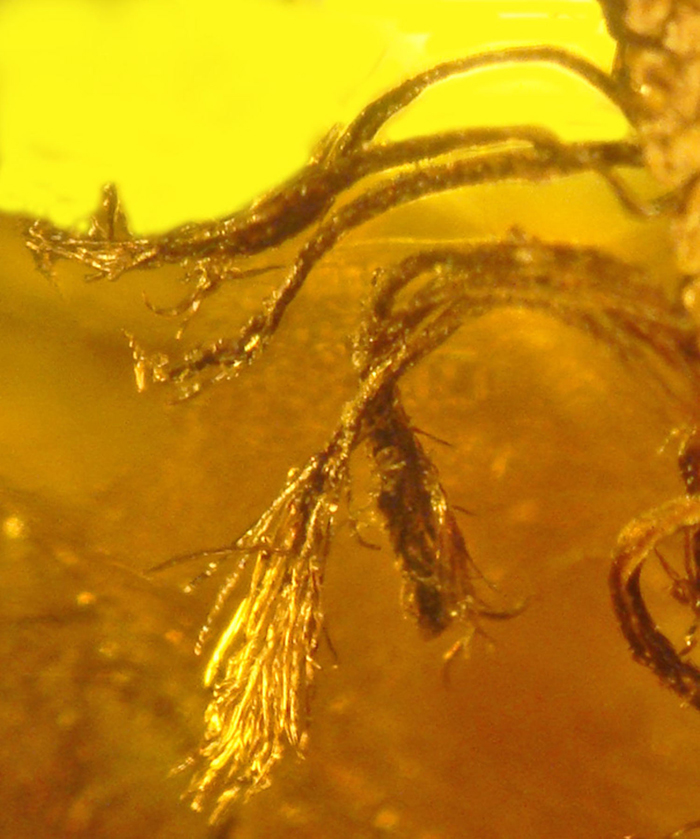Germinating Pine Cone Found Encased in Baltic Amber

Seed germination — a crucial stage in the development of all plants — normally occurs in the soil after the seed has fallen from the mother plant. In some infrequent instances, precocious germination — a type of viviparity or vivipary — occurs when the seed sprouts while still within the fruit. In a new paper published in the journal Historical Biology, Oregon State University’s Professor George Poinar Jr. described the first case of precocious germination of a fossil plant involving a number of seeds that have germinated in a pine cone embedded in a piece of 40-million-year-old (Eocene epoch) Baltic amber.
“Crucial to the development of all plants, seed germination typically occurs in the ground after a seed has fallen,” Professor Poinar said.
“We tend to associate viviparity — embryonic development while still inside the parent — with animals and forget that it does sometimes occur in plants. Most typically, by far, those occurrences involve angiosperms.”
“Angiosperms, which directly or indirectly provide most of the food people eat, have flowers and produce seeds enclosed in fruit.”
“Seed germination in fruits is fairly common in plants that lack seed dormancy, like tomatoes, peppers and grapefruit, and it happens for a variety of reasons. But it’s rare in gymnosperms.”
Precocious germination in pine cones is so rare that only one naturally occurring example of this condition, from 1965, has been described in the scientific literature.
“That’s part of what makes this discovery so intriguing, even beyond that it’s the first fossil record of plant viviparity involving seed germination,” Professor Poinar said.
“I find it fascinating that the seeds in this small pine cone could start to germinate inside the cone and the sprouts could grow out so far before they perished in the resin.”
“At the sprouts’ tips are needle clusters, some in bundles of five, associating the fossil with the extinct pine species Pinus cembrifolia, which was previously described from Baltic amber.”

According to the scientist, viviparity in plants typically shows up in one of two ways.
“Precocious germination is the more common of the two, the other being vegetative viviparity, such as when a bulbil emerges directly from the flower head of a parent plant,” he said.
“In the case of seed viviparity in this fossil, the seeds produced embryonic stems that are quite evident in the amber.”
“Whether those stems, known as hypocotyls, appeared before the cone became encased in amber is unclear. However, based on their position, it appears that some growth, if not most, occurred after the pine cone fell into the resin.”
Research on viviparity in extant gymnosperms suggests the condition could be linked to winter frosts.
“Light frosts would have been possible if the Baltic amber forest had a humid, warm-temperate environment as has been posited,” Professor Poinar said.
“This is the first fossil record of seed viviparity in plants but this condition probably occurred quite a bit earlier than this Eocene record.”
“There’s no reason why vegetative viviparity couldn’t have occurred hundreds of millions of years ago in ancient spore-bearing plants like ferns and lycopods.”
_____
George Poinar Jr. Precocious germination of a pine cone in Eocene Baltic amber. Historical Biology, published online November 8, 2021; doi: 10.1080/08912963.2021.2001808
Source: www.sci-news.com/








